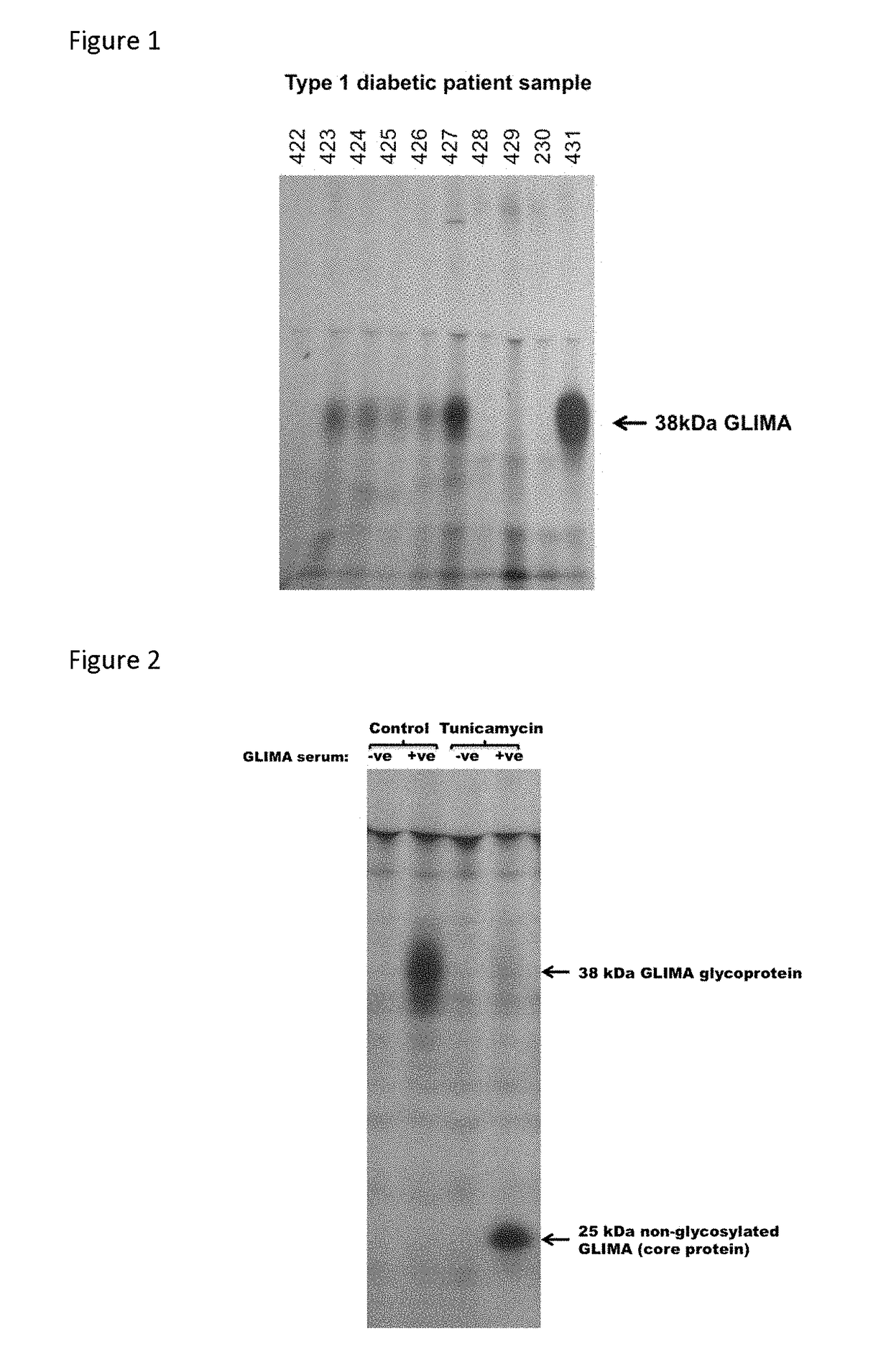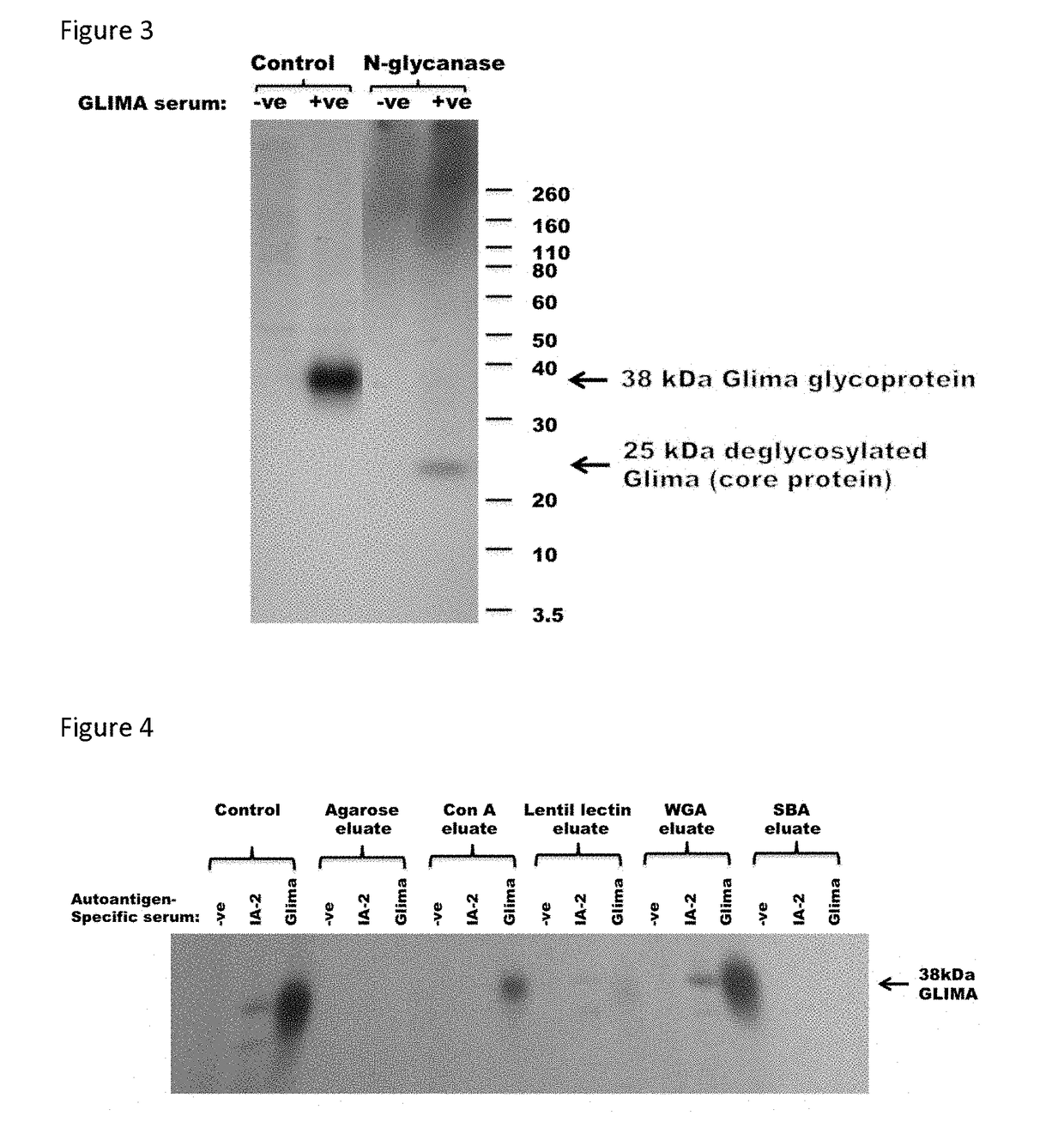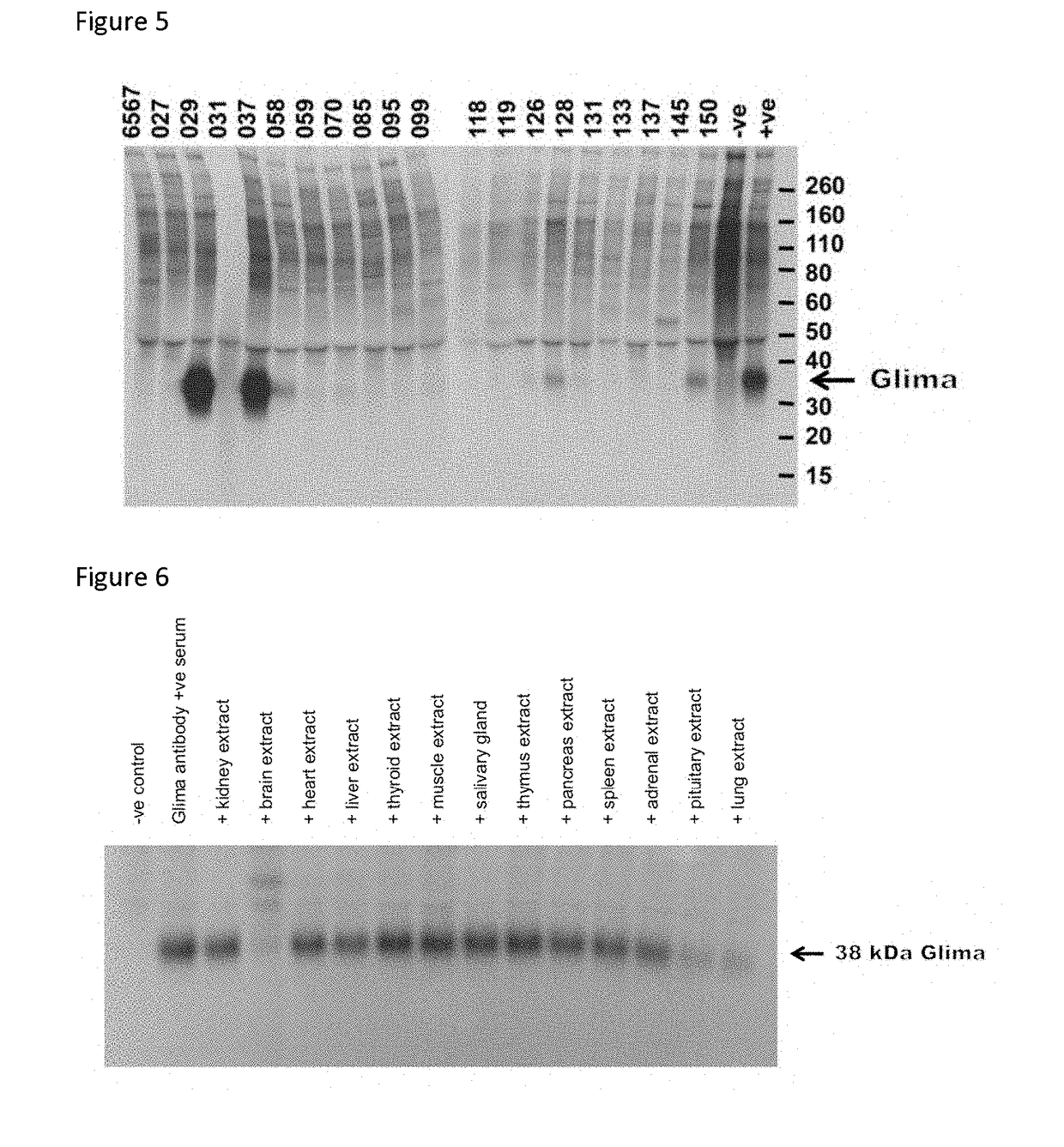Diagnostic target
a technology of diagnostic target and target, applied in the field of diagnostic target, can solve the problems of hampered studies, individual at risk of immunodeficiency, and inability to control blood sugar levels and a clinical diagnosis of diabetes
- Summary
- Abstract
- Description
- Claims
- Application Information
AI Technical Summary
Benefits of technology
Problems solved by technology
Method used
Image
Examples
example 1
[0076]Detection of Radiolabelled 38 kDa Protein (Glima 38) Expressed by Pancreatic Beta Cell or Hypothalamic Cell Lines Immunoprecipitated by Antibodies in Type 1 Diabetic Patients' Sera.
[0077]A 38 kDa islet membrane autoantigen in Type 1 diabetes (referred to as Glima-38) has been shown to be expressed in immortalised pancreatic beta cell and neuronal cell lines by immunoprecipitation from extracts of cells labelled with 35S methionine (Aanstoot et al., (1996) J Clin Invest 97: 2772-2783 Roll U, et al. (2000) Diabetologia 43:598-608 1996). A similar approach was used to detect antibodies to Glima-38.
[0078]Pancreatic beta cell or hypothalamic cell lines RINm5F, betaTC or GT1.7 were cultured in Dulbecco's modified Eagle's medium (DMEM), containing 4,500 mg / l glucose and 10% fetal calf serum in 25 cm2 or 75 cm2 tissue culture flasks. Cells were passaged after removal from flasks by trypsinisation in 2.5 g / l trypsin, 0.2 g / l EDTA in Hank's Balanced Salt solution. Cells were plated in 2...
example 2
[0088]Glycosylation of Glima 38
[0089]To determine the glycosylation status of Glima 38, RIN5AH rat insulinoma cells were incubated in the presence of glycosylation inhibitors during metabolic labelling of endogenous proteins before extraction and immunoprecipitation of Glima as described in Example 1 above. RIN5AH cells were plated in 24-well plates to confluence and incubated in 1 ml labelling medium alone or in the presence of the N-glycosylation inhibitor tunicamycin (10 μg / ml) for 30 minutes at 37° C. before addition of 9 MBq 35S methionine. Cells were labelled for 5 hours at 37° C. before harvesting, extraction and immunoprecipitation as in Example 1 above. Blocking of N-glycosylation with tunicamycin was found to reduce the relative molecular mass of the immunoprecipitated labelled autoantigen from 38,000 to approximately 25,000 (FIG. 2), indicating that the core polypeptide chain of Glima 38 is approximately 25 kDa.
[0090]To further evaluate glycosylation of Glima 38, RIN5AH i...
example 3
[0092]Purification of Glima 38 Basic Protein
[0093]The applicants appreciated that glycosylation is a property that can be exploited to facilitate purification by lectin affinity chromatography for the purpose of protein identification. To determine which lectins are most appropriate for use in Glima 38 purification, Triton X-114 detergent phase fractions of 35S-methionine-labelled RIN5AH cells were prepared as described in Example 1 above. Detergent phase-partitioned proteins equivalent to 1.2×107 cpm per sample were incubated with 50 μl of concanavalin A agarose (selective for glycoproteins with branched α-mannosidic structures), lentil lectin agarose (selective for glycoproteins with a fucosylated core region of bi- and triantennary complex type N-Glycans), wheat germ agglutinin agarose (selective for glycoproteins with N-acetyl glucosamine or sialic acid-rich carbohydrate) or soy bean agglutinin agarose (selective for glycoproteins with terminal N-acetyl galactosamine or galactos...
PUM
| Property | Measurement | Unit |
|---|---|---|
| pH | aaaaa | aaaaa |
| relative molecular mass | aaaaa | aaaaa |
| pH | aaaaa | aaaaa |
Abstract
Description
Claims
Application Information
 Login to View More
Login to View More - R&D
- Intellectual Property
- Life Sciences
- Materials
- Tech Scout
- Unparalleled Data Quality
- Higher Quality Content
- 60% Fewer Hallucinations
Browse by: Latest US Patents, China's latest patents, Technical Efficacy Thesaurus, Application Domain, Technology Topic, Popular Technical Reports.
© 2025 PatSnap. All rights reserved.Legal|Privacy policy|Modern Slavery Act Transparency Statement|Sitemap|About US| Contact US: help@patsnap.com



